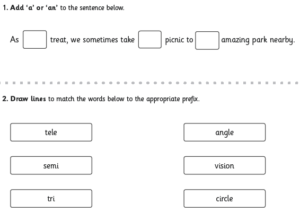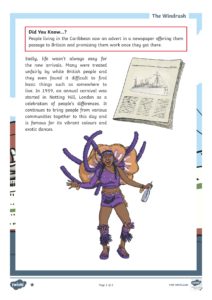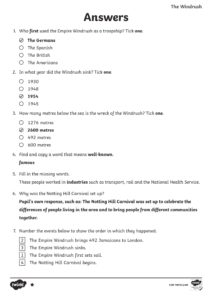Hello Happy Hippos and Lovely Lions,
We hope you are loving all of the work we have set for you- who knew there were dragons around!
Here is our learning for this week…
Topic:
China is well known for origami, a skill taught in which paper is folded to make art work. Below is a link to make your very own origami fox!
https://www.easypeasyandfun.com/origami-fox/
Can you challenge yourself and make any other animals?
English: Direct speech
Activity 1: Revision.
What can you remember about how to punctuate speech? Remember: Speech is what someone is saying. The attachment gives you lots of different activities around speech to help you revise how to correctly punctuate sentences where someone is speaking. Think hard about all the work we’ve already done in class but there’s also a handy parents guide for a grown up to help you if you get stuck.
Activity 2:
In newspapers, reporters often use direct speech in their stories.
When interviewed about the Dragon incident at school. The following staff members had the following to say:
Mrs Pike: I couldn’t believe what I saw. The classroom was a total mess and all the children’s work was destroyed. I’m so grateful we weren’t in class at the time.
Mr Cunningham: It’s a nightmare. There is a huge amount of damage which will cost so much money to repair.
Miss Shaw: The dragon was enormous. Smoke billowed from its nostrils and the screech that came from it was deafening. I was terrified.
Mr Chapman: Tiles were falling off the roof and parts of the classroom were still smouldering. I had to work quickly to make sure the site was safe before anyone got seriously hurt.
Rewrite these sentences using the correct speech punctuation – this will be for a newspaper so you need to add as much information for the reader as possible.
Remember:
-Use inverted commas around the words that person is saying.
-Who is speaking? How are they speaking? You are not allowed to use the word ‘said’. Can you add an adverb or further information to improve the sentence?
– You can split the speech in 2 sections.
– Can you improve the rest of the punctuation?
Challenge: Can you add a subordinate clause to give extra information?
There are many different ways to write speech sentences. Have a go at different ways to see what you prefer and what you think sounds best.
Here are some examples:
“I couldn’t believe what I saw! The classroom was a total mess and all the children’s work was destroyed. I’m so grateful we weren’t in class at the time!” exclaimed Mrs Pike despondently.
Mrs Pike, one of the year 3 teachers at St Peter’s Primary school, exclaimed “ I couldn’t believe what I saw! The classroom was a total mess and all the children’s work was destroyed. I’m so grateful we weren’t in class at the time!”
“I couldn’t believe what I saw!” exclaimed Mrs Pike as she struggled to fight back tears, “the classroom was a total mess and all the children’s work was destroyed. I’m so grateful we weren’t in class at the time.
Challenge: If you’d like to challenge yourself, please take a look at this PDF. It tells you all about direct speech and reported speech. See if you can rewrite any of your sentences from your work as reported speech instead.
Guided reading:
- Complete the comprehension task below. There are 3 levels so ensure you challenge yourself – ask a grown up to help you decide if you’re not sure.
2. Take some time to read a selection of newspapers and articles. Think about the way they are written, what they trying to tell you, how the journalist makes it interesting for the reader. The Newsround website is a great place to start. First News (the paper we have in school) is also offering free downloads of digital copies, available via their website with an email address.
Maths
Here are the next two Oaks Academy lessons to complete- here is a revision lesson on parallel and perpendicular lines from last week.
https://classroom.thenational.academy/lessons/to-revise-parallel-and-perpendicular-lines
Here is a lesson starting our new learning on 2d shapes-
https://classroom.thenational.academy/lessons/to-identify-rectangles-including-squares
If you fancy a challenge try these –
SPAG- spelling
| young | double | touch |
| trouble | country | rough |
This week we are focusing on the /u/ sound spelt ‘ou’. Look at the words above. ‘box up’ these words, for example-
Challenge- can you now create a word search hiding these words?
Grammar:
- When do we add ‘a’ or ‘an’ before words? Write the rule down.
Challenge: Can you think of any exceptions?
- What is a prefix? Complete the following activity.
Challenge: Can you find the meaning of each prefix? Can you think of any other examples – create a word web for each prefix.
- Use your English work to complete.
- Remember that an adverb adds to the verb.
Science
Have a watch of the following video https://www.bbc.co.uk/bitesize/clips/zk9rkqt . Feel free to explore other videos in the Magnets collection in addition to this one if you’re interested. If you have them, have a play with some magnets to see if you can get them to attract/repel each other. Or you could use toy trains like these.
Here’s an Activity Sheet to complete.
This website has a very good explanation and an interesting experiment to try too… https://nationalmaglab.org/education/magnet-academy/try-at-home/make-a-compass
Music from Mrs Sumba
Go to the website below and watch Naomi Wilkinson’s video about Grazyna Bacewicz.
https://www.bbc.co.uk/teach/ten-pieces/classical-music-grazyna-bacewicz-overture/zf2k382
Why was Grazyna Bacewicz considered a musical trail blazer?
Now listen to the whole piece in the second video. Can you hear the morse code pattern v …- for victory?
Why not try creating your own secretive rhythms
- This is top secret.
2. Don’t tell a soul.
Science from Miss Stapley
Balloon Car Racers https://www.rigb.org/families/experimental/balloon-car-racers – to watch the video
The activity – Make cars which are propelled by balloon power.
ExpeRiment with designs and see what factors affect how fast or how far your car goes.
Learn how a balloon car works just like a rocket.
https://www.rigb.org/docs/ballooncarracers_infosheet_1_1.pdf – to view the information sheet
What to do:
- Make a balloon car based on the instructions Mark gives in the video.
- Decide how you will judge what makes a ‘good’ car – is it how far it goes or how fast it goes?
- Investigate what happens if you have bigger or smaller wheels (you can use other types of lids or make wheels from cardboard and use blu-tac or glue to attach them to the kebab skewers).
- Investigate what happens if you change the design of your car in other ways – you can watch the video again for inspiration for other designs.
Going further challenge:
- Measure how far your car travels using a tape measure.
- Time how fast your car travels ½ a metre – would double the speed be the time that your car would travel 1 metre? Test it out.
- You can find the speed of your car in metres per second using a stopclock and a tape measure: Measure the distance the car travels (in metres) then dividing that distance by the time it took to travel (in seconds).
History Learning: Windrush
June 22nd marks the anniversary of the arrival of the ‘Windrush Generation’ to Britain in 1948. Learn about the event by reading this comprehension text and then complete the Geography activity afterwards.









